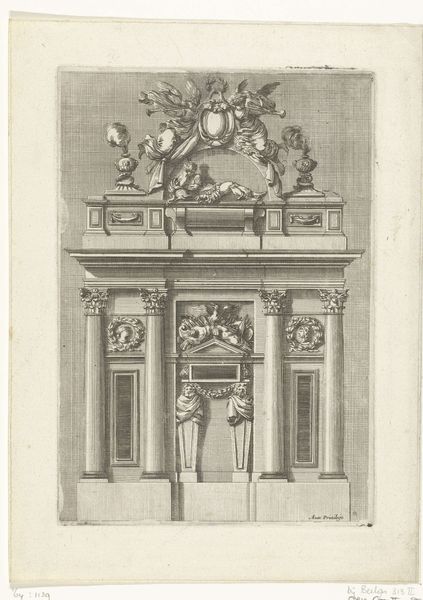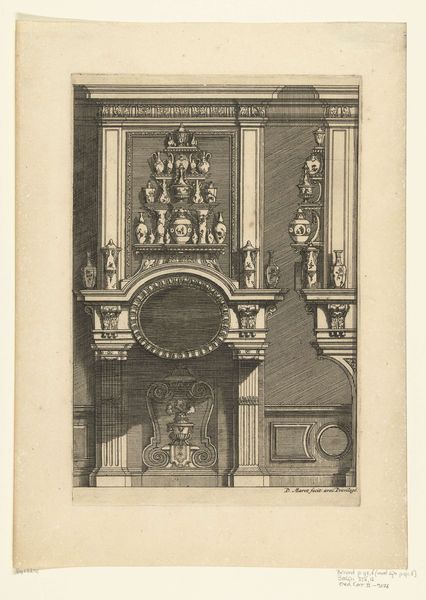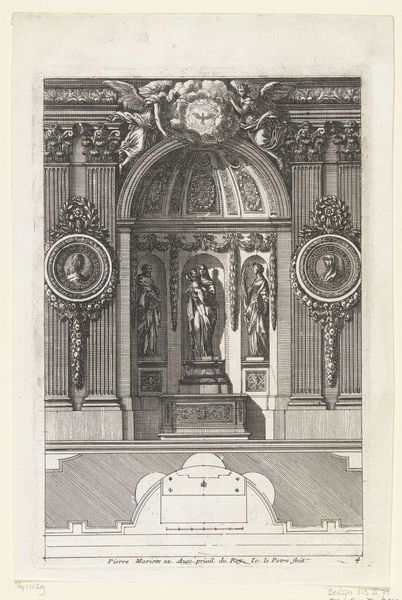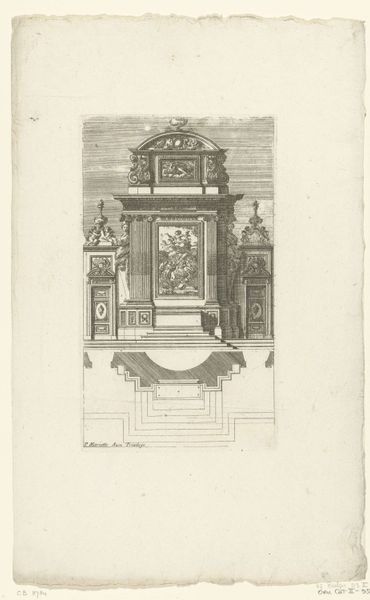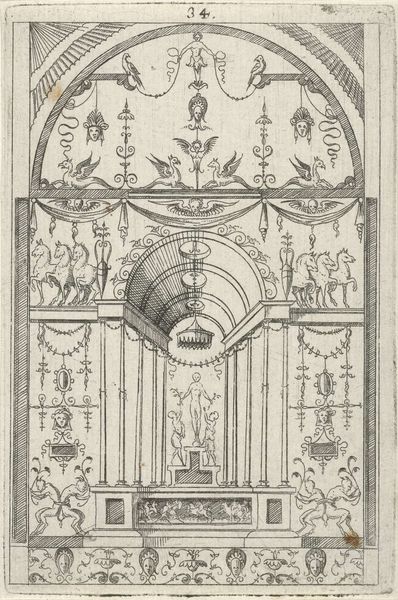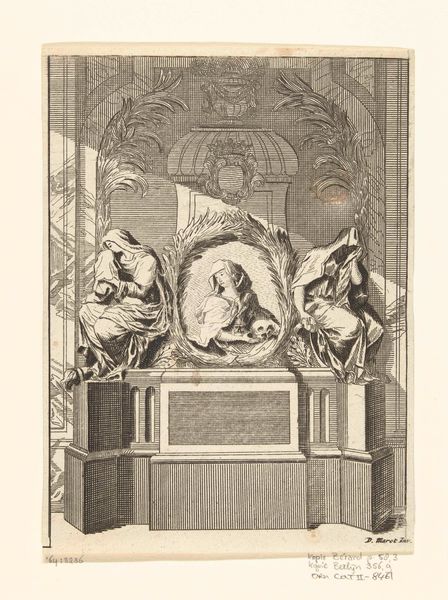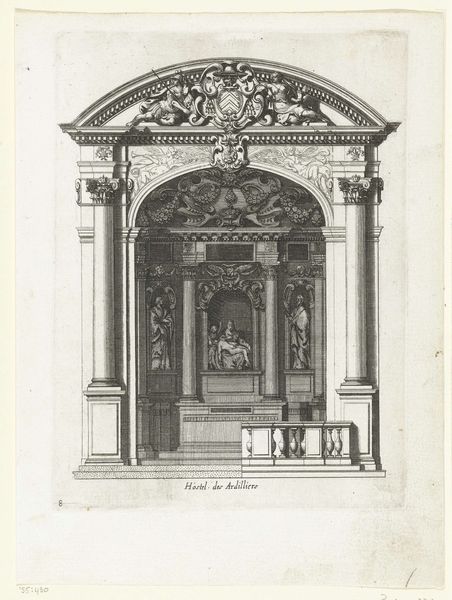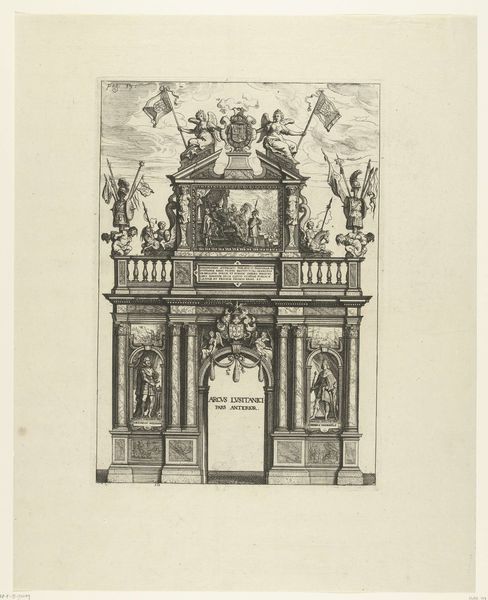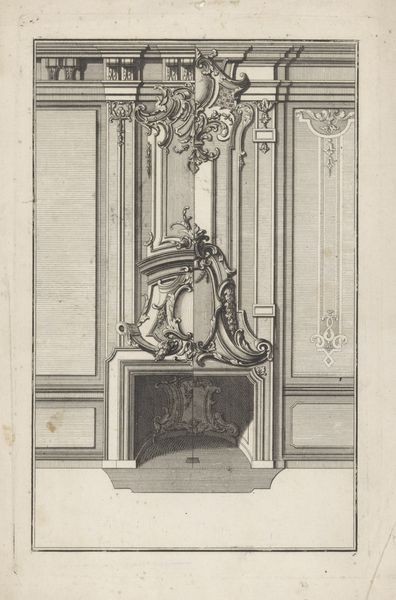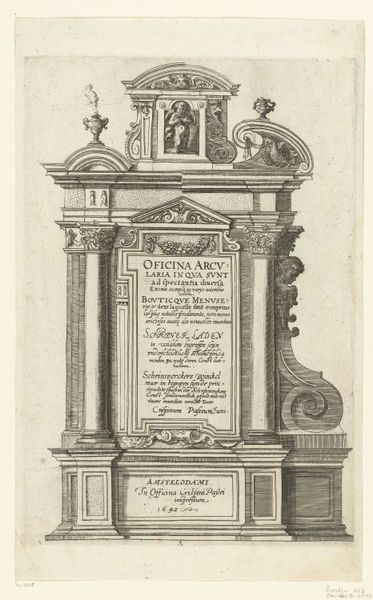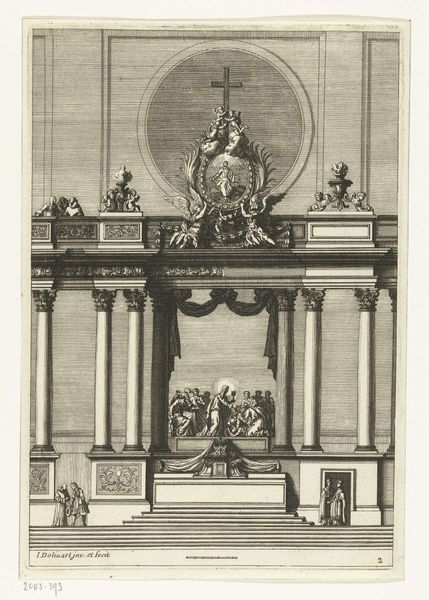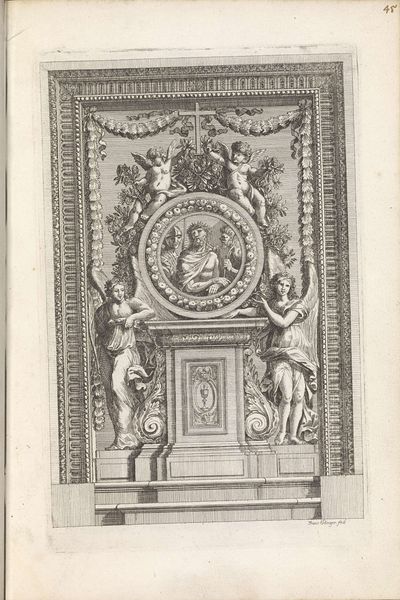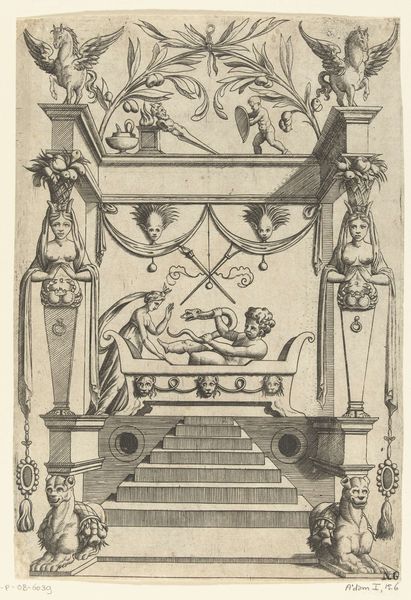
Vernietiging der Aristocratie, decoratie op de Westermarkt, 1795 1795
0:00
0:00
drawing, print, etching, watercolor, ink
#
drawing
#
neoclacissism
#
allegory
# print
#
etching
#
traditional media
#
watercolor
#
ink
#
watercolour illustration
#
history-painting
#
academic-art
Dimensions: height 220 mm, width 145 mm
Copyright: Rijks Museum: Open Domain
Curator: This is a design by Noach van der Meer the Younger, titled "Vernietiging der Aristocratie, decoratie op de Westermarkt, 1795." It’s rendered in ink, watercolor, etching and depicts a temporary structure erected during a moment of radical change in Amsterdam. Editor: There's a sense of classical order overlaid with, well, a kind of chaotic energy. The central image, that figure battling snakes, immediately grabs your attention. It is almost theatrical. Curator: Indeed. Van der Meer crafted this during the Batavian Revolution. This structure was conceived to celebrate the new, democratic order. The image central to the design references Hercules slaying the Hydra. Editor: So, the Hydra represents the aristocracy? The multi-headed beast being crushed speaks volumes about the revolutionaries' desires and, frankly, their violence. And there’s a theatricality to it all; that the performance took place at the Westermarkt gives another layer of significance as public declaration. Curator: Precisely. The location underscores the intent: to publicly dismantle the old symbols of power. The flanking figures in their niches are classical ideals. They represent a turn towards reason, law, and a civic ethos designed to oppose aristocracy. Editor: Those supporting figures, framed within such rigid, controlled lines… it's fascinating to see the contrast. This temporary construction uses potent iconography. Was it meant to convey a message of absolute control, an ideology set in stone despite the chaotic imagery it suppresses? Curator: In a way, yes. These displays were critical in shaping public perception. This event tried to weave the overthrow of power into an epic narrative of good versus evil. The classical aesthetic acted to grant a veneer of permanence, of righteousness to what was, at its core, a violent transformation. Editor: It's a fascinating study in image-making during a time of revolution, demonstrating how the symbolism of power shifts. It all feels so calculated, every line, shadow, and figure reinforcing the narrative they are eager to put into practice. Curator: I agree, a vital lens through which we can see and investigate how revolutions utilize images and shape them into cultural memory, reminding us of both how the power of cultural hegemony works but also how this is also related to today's identity and politics. Editor: Yes, and as we recontextualize the event today, hopefully offering avenues for necessary resistance, in our moment.
Comments
No comments
Be the first to comment and join the conversation on the ultimate creative platform.

